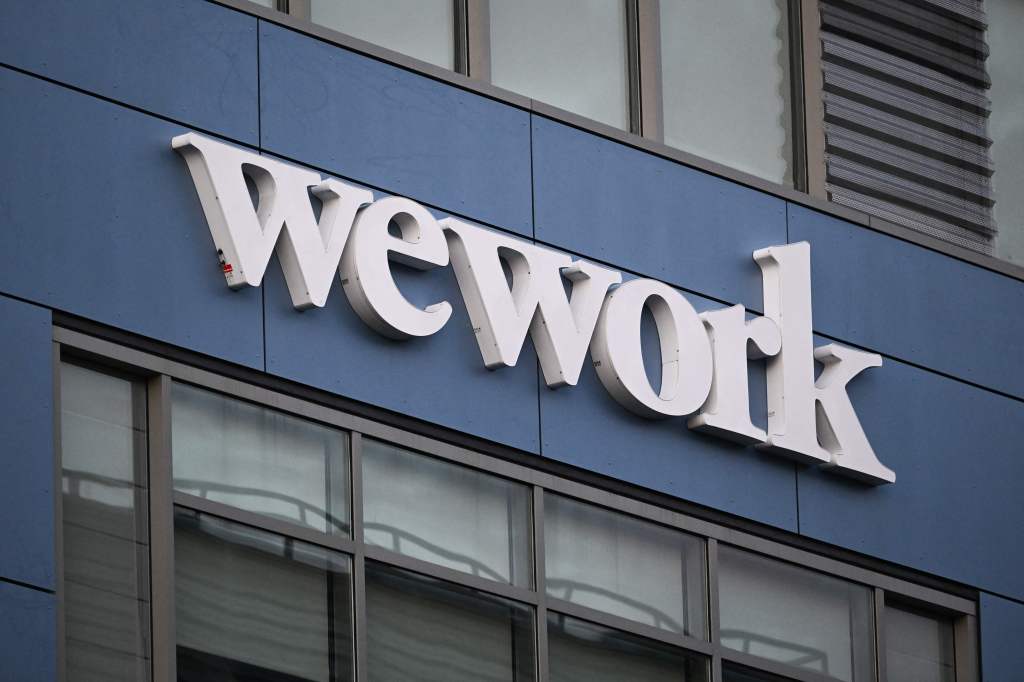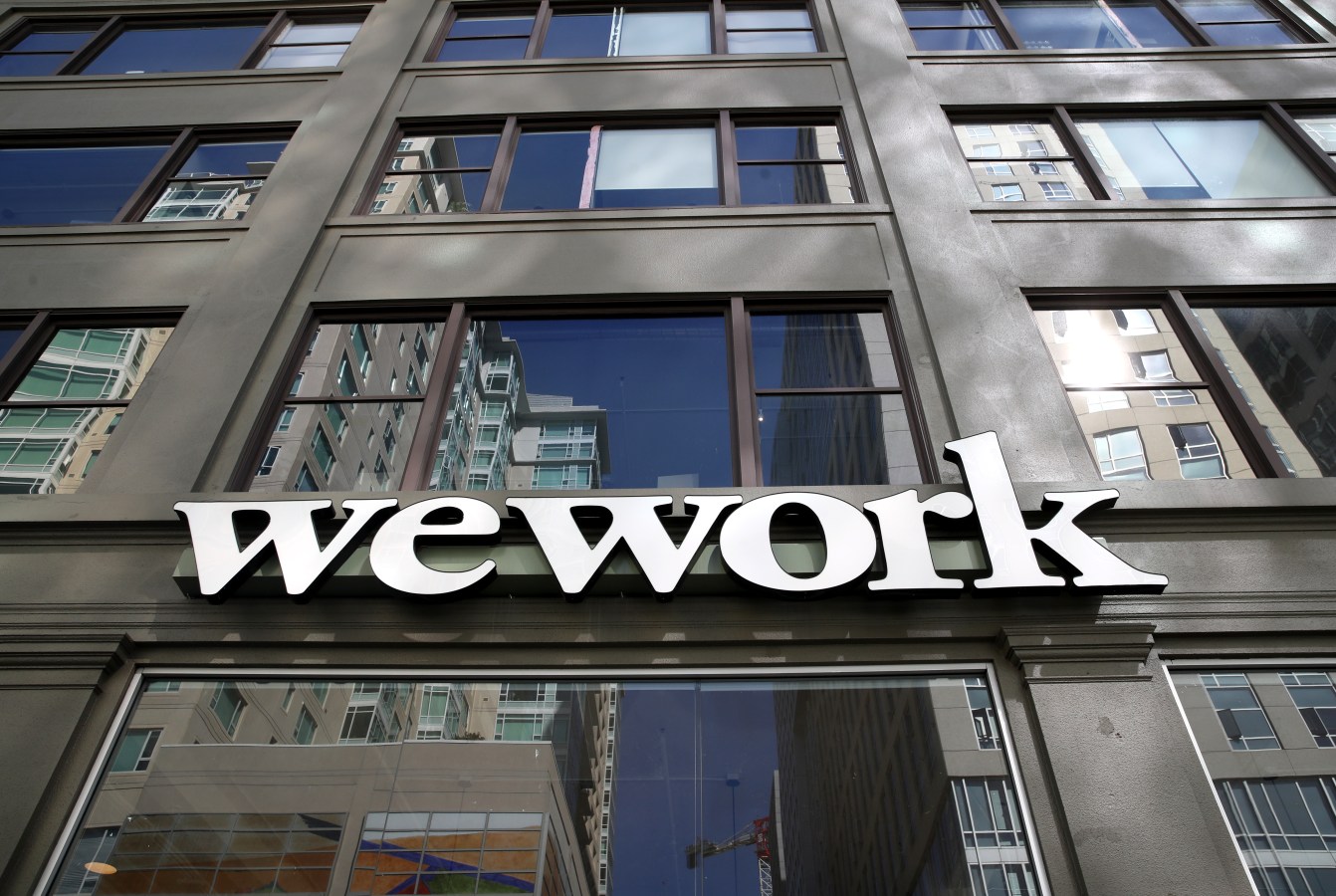A day after office co-working start-up WeWork revealed there was “substantial doubt” about its ability to continue, its share price has dropped again. But how did it get here?

The embattled start-up, which was founded in 2010 by Adam Neumann, Rebekah Paltrow Neumann and Miguel McKelvey, rents office spaces to remote, freelance and self-employed workers.
As of June, the company operated 777 locations across 39 countries, with a total of 906,000 workstations and 653,000 physical memberships. Occupancy rates were down just 1% on last year, but in a statement released on August 8th, the company said “substantial doubt exists about the Company’s ability to continue”. It said its fate was “contingent upon successful execution of management’s plan to improve liquidity and profitability over the next 12 months.”
The company, which was once valued at US$47 billion, now has a market cap of just US$278 million, after its shares tanked to a low of US$0.13. In the last week alone, the company’s share price has declined more than 40%.
The making and breaking of the company has attracted much attention over the last decade-plus, so much so that it has been documented in a 2021 film starring Ashton Kutcher, as well as 2022 a series featuring Jared Leto and Anne Hathaway. Here’s a rundown of what went wrong.
WeWork: The early days
After its 2010 launch, WeWork enjoyed early success. By 2014, it was valued at US$4.6 billion by Crunchbase, with big-name investors like JP Morgan Chase and Goldman Sachs.
By 2016, Fortune reported that the company’s valuation looked more like US$10 billion, but flagged an early warning: the company’s business model was expensive.
In 2017, WeWork confirmed a US$4.4 billion investment by Japanese investment giants SoftBank, which included a US$3 billion investment into WeWork directly, via primary and secondary shares, and US$1.4 billion investment into three subsidiaries: WeWork China, WeWork Japan and WeWork Pacific. That brought the company’s valuation to US$20 billion.
Related
In January 2019, the company completed its Series H funding round led by Softbank, raising US$1 billion. Softbank’s total investment in WeWork now totalled US$10 billion, giving the company a valuation of US$47 billion.
WeWork: The IPO debacle
In August 2019, the company filed a prospectus for its initial public offering, which revealed the company’s losses (it lost US$1.6 billion on US$1.8 billion in revenue in 2018) – and some questionable governance practices, like the fact that co-founder and then-CEO Adam Neumann had a large amount of voting power for his shareholding – for the first time to the public.
A month later, Bloomberg reported that WeWork was actually targeting a valuation of between US$20 billion and US$30 billion for its IPO, rather than its claimed US$47 billion valuation.
WeWork said it would postpone its IPO to the end of the year, but in September, CEO Adam Neumann was forced to step down from his role and the company revealed it would delay its IPO indefinitely.

WeWork: The collapse
In October 2019, WeWork was facing solvency issues. According to a Bloomberg report, after its 2018 losses, it was poised to run out of cash by mid-2020. Its survival depended on its major investor, Softbank, which by that stage had a near-30% stake in the flailing business.
Softbank struck a deal to take control of the company, providing US$5 billion in new financing and up to US$3 billion in a tender offer for existing shareholders. The Japanese investment firm also sped up a US$1.5 billion financing commitment that was scheduled for the following year.
When the pandemic began in 2020, the company was forced to conduct rounds of layoffs and shutter offices, which led to further losses. In March 2021, the company disclosed a US$3.2 billion loss for 2020 and revealed plans to go public via a SPAC merger at a valuation of just US$9 billion.
But the pandemic recovery also led to a demand for flexible workspaces, and the company finally debuted on the NYSE via a SPAC merger with BowX Acquisition in October 2021.
In February 2023, the company revealed it turned a core profit in December 2022 for the first time since its IPO, which was aided by cost cuts. But the company still continued to struggle with long-term lease obligations, as some of its tenants are only on short-term leases.
WeWork: Today
In its most recent statement, the company said that the increased supply of commercial real estate has given consumers more options. It reported a net loss of US$696 million in the six months ending in June, though that loss is small in comparison to the same time period one year prior when the company lost US$1.14 billion.
Shares dipped after the announcement, which leads us to the time of writing where they are worth US$0.13 (they peaked at US$13 in 2021).
And what is the plan to make WeWork profitable? In its statement, the company revealed its grand plan, which included negotiating more favourable lease terms; reducing member churn; controlling expenses and limiting capital expenditure; and seeking additional capital via issuance of debt or equity securities or asset sales.
Look back on the week that was with hand-picked articles from Australia and around the world. Sign up to the Forbes Australia newsletter here or become a member here.



